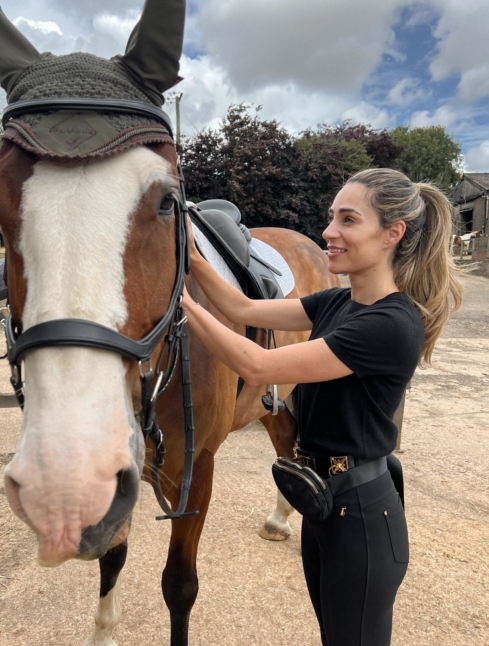what happened when i met with the a.s.a.


I will never forget the first time an e-mail from the A.S.A (Advertising Standards Authority) appeared in my inbox. In short, I instantly began crying and shaking with fear. It’s not something people tend to shout about when it happens to them and in all honesty I knew little about their complaints process. It was regarding a video about product I had been gifted with no obligation to post about and had to decided to make an informative video to document my experience. The sense of uncertainty and my lack of knowledge on how the A.S.A. worked meant I was sure I was going to get into trouble for something or other. I have this completely irrational part of my brain which works overtime in situations such as this one, so bear with me! Upon speaking to the Complaints Executive, it immediately became clear that dealing with the A.S.A. was not something I needed to fear, in fact I found the whole encounter extremely informative.
However, I mean, of course there is a ‘however’ because otherwise this blog post would be painfully short and a tad irrelevant!
During a period of particularly intense trolling of both myself and my family, included within this was regular reports to the A.S.A. including a lovely little one on my Wedding day. Of course they weren’t to know that but most of my friends and family are aware how unwell I was immediately after and it was all just a bit much.
More and more reports followed and I began finding it difficult to determine what the enforced guidelines actually were, and on a number of occasions the same piece of content was flagged a number of times requiring multiple changes. I mean if even the A.S.A. couldn’t get it right the first time, how was there hope for any of us? My frustrations were only intensified when working on multiple campaigns alongside other creators who simple refuse to disclose and still do not disclose to date only to find I am being reported, and they are not, despite clear attempts of declarations being made on my part, often on multiple times for the same piece of content.
I am by no means alone in my experiences and as it began to happen to more and more creators, conversations began to move to Twitter and confusions and frustrations intensified.
As with all these things, eventually something had to give.
Following a conversation via e-mail with Matt who deals with the social media side of things for the A.S.A. we organised a meeting full of professionals, from Talent Managers to PR Execs and of course, a number of creators too which included myself, Jen and Kat. It began with an introduction to the team and what it is they do at the A.S.A. but I think we were all eager to discuss the areas of confusion and the issues we had been having over the last few months.
There were lots of opinions on what people felt constitutes an Ad and I’m not sure if we ever did get to the bottom of what was acceptable with regards to disclosing affiliate links (if you want to know more about how I disclose and my code of conduct see here). To be honest, the meeting went on for hours and I would have loved to sit there all day or had multiple meetings with them to cover each area in depth as the whole meeting was both fascinating but more importantly, reassuring.
I think the main problem we keep coming up against with regards to a lot of creators when dealing with the A.S.A. was the lack of consistency in their correspondences with us. Even when following previous instructions from them, you could still find yourself essentially in the wrong. I think the majority of us understand that if we’re working with a brand and they are paying us, it’s an Ad, what confuses things is the other aspect to sponsored content which the A.S.A. refers to as “Control” and this is when a brand has control over the content you are creating in some way and that is not a one side fits all kinda gig as we established. The A.S.A. acknowledged that there were clear areas that they needed to work on and we highlighted a number of areas where their systems could potentially be problematic, from ruining relationships with brands to inadvertently providing another anonymous platform for online trolling.
The good news is, they understand that things have been somewhat complex as the industry grows at an alarming rate and are working hard behind the scenes to make it all much easier to digest. In the meeting we were shown a number of flow charts and one pagers for determining sponsored content which I found much easier to find via Kat’s website than I did the actual A.S.A.’s site.
But the most important aspect that I took from the meeting relates to the way I felt when the A.S.A. first contacted me over a year ago. I was scared, panicked and wanted to cry because I wasn’t prepared for it. I didn’t know what to expect and the visions of law suits, fines and public shaming were all too real when in actual fact, if you are anything like I am, which I suspect the majority of you are, you are always trying to be as transparent and authentic as possible and the A.S.A. are basically there to help you ensure you are doing that right.
I can’t speak on behalf of those who make a point of not disclosing as I’ve not ever dealt with the A.S.A. in that sense, as all sponsored content has always been disclosed on my channels and my dealings with them have always been to ensure that for this particular piece of content the declaration is the right kind. But what I didn’t know was that I can myself contact the A.S.A. for guidance if I am ever unsure whether something needs a different approach to disclosure, or I am simply needing more information on a particular area of advertising. They are there to help and guide us in the world of transparency and there’s no need to fear them or find yourself crying and panicking on your office floor, funnily enough *ahem*.
Now, where can we get more information about disclosure and transparency? Well for the moment I personally have found podcasts like Kat’s for Blogtacular, make things far more digestible and this page includes one of the flow charts and one pagers mentioned above for referencing when disclosing sponsored content.
In summary, like many of us, the A.S.A. are learning to navigate the space effectively. Feeding back on our experiences, can help improve their processes and procedures as well as help the development of easily accessible information, which is at the forefront of what they are currently doing. They are there to help and guide us because essentially, we all have the same end goal in sight.
For more information, help or guidance you can visit the A.S.A.’s website or tweet them (like I love to do) at @ASA_UK.
Imagery by Cal Macbeth
Error: No connected account.
Please go to the Instagram Feed settings page to connect an account.














